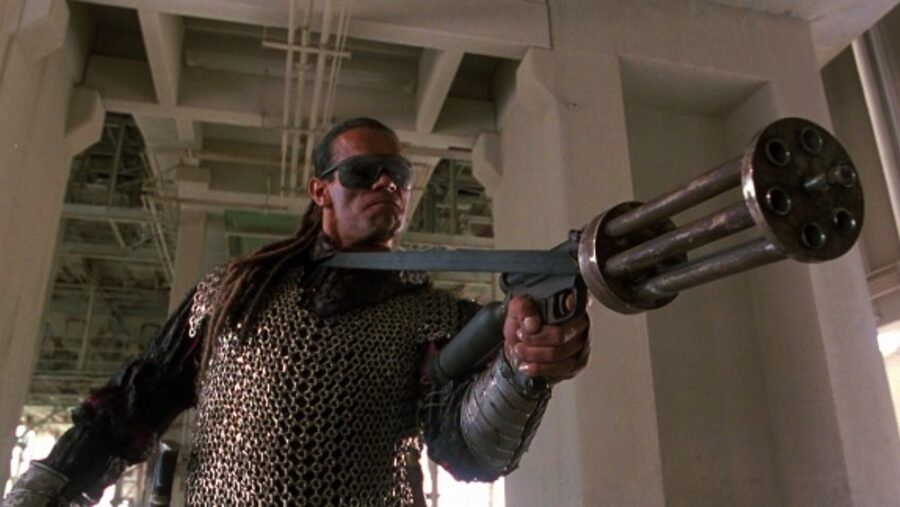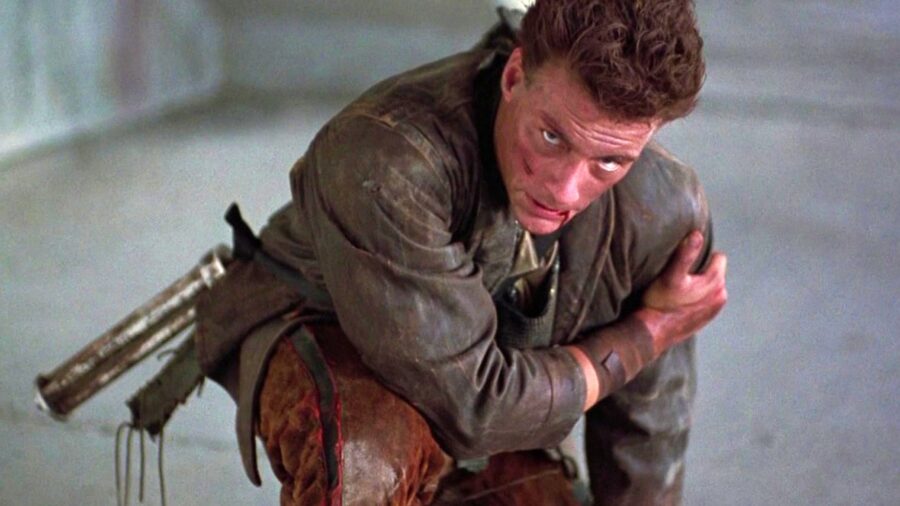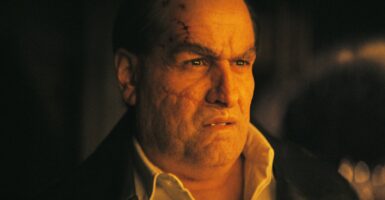1980s Sci-Fi B-Action Thriller With Future Star Exists Thanks To Spider-Man And He-Man

Cannon Films is one of the most notorious movie studios in history. The studio’s business model was to overpromise and underdeliver. If that sounds like an untenable way to run a movie studio, that’s because it is. That unstable approach to moviemaking is how Cannon somehow turned a failed Spider-Man movie and an abandoned He-Man sequel into the Jean-Claude Van Damme movie Cyborg.
We Already Spent The Money, We Have To Make Something…

In 1987, Cannon released its two highest-profile projects: Superman IV: The Quest For Peace and Masters of the Universe. They both flopped—hard.
That didn’t stop Cannon from announcing Masters of the Universe 2 at the 1987 Cannes Film Festival, though. Like I said, overpromise…
At the same time, Cannon acquired the rights to Spider-Man and was preparing to shoot the film simultaneously with the He-Man sequel. Cannon had already spent $2 million on costumes and sets when both projects fell through.
Rather than eat the costs, Cannon decided to make a new movie that would utilize the abandoned Spider-Man and He-Man assets. Enter 1989’s Cyborg.
Formerly Slinger

Cannon tasked the director they had pegged for the two failed projects, Albert Pyun, with crafting a new movie from scratch. The only caveats were that it would have to incorporate the sets and costumes from the other films and be made on a budget of only $500,000.
With that in mind, Pyun got to work and wrote the entire script for what would become Cyborg in a single weekend.
Originally titled Slinger, Cyborg would be a dystopian sci-fi fantasy.
Pyun imagined a post-apocalyptic world where humanity is on the brink of extinction thanks to a deadly virus. The only known cure was hidden inside the head of a woman cyborg.
An Unfortunate Kick

Pyun conceived Cyborg as a black-and-white rock opera with minimal dialogue starring Chuck Norris. Cannon had other ideas and insisted that Jean-Claude Van Damme star instead.
The studio had some success with Van Damme’s Bloodsport and hoped that the Belgian kickboxer could work the same magic on Cyborg.
Cyborg was shot in 23 days—a much shorter production than most Hollywood films but with just as much drama.
I could write a whole article about Jean-Claude Van Damme’s inability to “movie fight,” but for now, I’ll just say this: Jean-Claude Van Damme may be a champion kickboxer, but as a stuntman, he sucks.
Jackson “Rock” Pinckney was performing a fight scene with Van Damme when Jean-Claude injured his left eye. Pinckney went through emergency surgery but ultimately lost all use of his eye.
The Cyborg injury was litigated four years after the movie was shot, and Pinckney took Van Damme for $485,000 in damages. I’m not sure that makes up for being blinded via a boot to the eye, but at least he got something.
Cut And Recut And Recut

Meanwhile, Cannon also received something: a black-and-white cut of Cyborg with an insanely loud heavy metal soundtrack.
The studio was not amused, and Pyun recut the film in color and with a less abrasive soundtrack. This time, it was audiences who weren’t amused.
Test screenings went so badly that Cannon took the film away from Pyun and recut it. Gone was the “gloomy sci-fi noir,” as Pyun described it.
In its place was a more action-heavy Cyborg better suited for an up-and-coming action star like Van Damme.
It Made A Nice Profit

Ultimately, Cannon made the right call. Cyborg was a modest hit, earning $10 million at the box office.
That doesn’t sound like much next to a Marvel movie or Star Wars, but those films also have budgets bigger than some countries’ GDPs. Cyborg grossed 20x its budget—a success by any metric.
Had the studio gone ahead with Spider-Man and Masters of the Universe 2, they most certainly would have lost money. Instead, Cannon’s misfortune led to a small, successful cult classic that still has its fans today.
Cyborg might not be a great movie, but for a film created just so some sets won’t go to waste, it’s not half bad.












